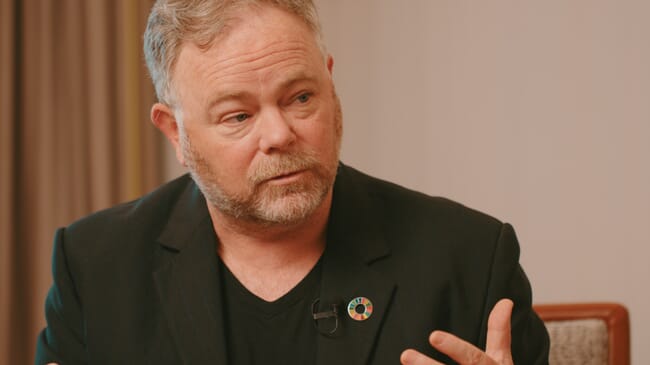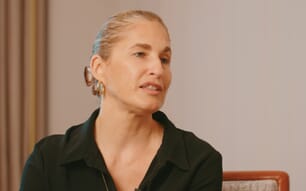
The interview is part of a new series filmed by The Fish Site’s media team at dsm-firmenich’s recent Global Aqua Days event in Athens. And, in it, Glencross discusses topics including precision nutrition and the shortcomings of many novel ingredients with The Fish Site’s Rob Fletcher.
Glencross, whose career has consistently focused on feed while working in academia, feed companies and industry associations, stresses the importance of ingredient diversity.
“Ideally what you want is a range of ingredients with reliable supply, quality and price. That gives you flexibility and allows you to manage risk,” he observes.
While crop-based ingredients such as wheat, soy and corn increasingly dominate many feed formulations, marine-derived inputs remain vital. However, as he points out, the way they are sourced has shifted dramatically, with 40percent of global fish oil and fishmeal now extracted from seafood by-products, such as trimmings from species like herring and mackerel. This represents millions of tonnes of material annually, much of it diverted from waste streams into valuable nutrition for farmed fish.
While many startups are focusing on developing alternative ingredients, Glencross highlighted that the growth of by-product use is “about 100,000 tonnes every year—greater than that of insect meal, single cell, and algae combined” – yet this surge all too often goes unnoticed.
Crucially, such resources ensure that nutrients remain within the food chain. “The idea of using 100 percent of the fish has to be a mantra we have going forward,” he said.
This shift comes against a backdrop of changing feed dynamics. In 2000, aquaculture feeds contained roughly 25 percent fishmeal; today, the global average is closer to 9 percent -although the sector now produces around 55 million tonnes of feed annually, it accounts for only about 5.2 million tonnes of marine ingredients.
“Marine ingredient use in aquafeeds has grown by tonnage, but proportionally it’s more than halved. It had to,” Glencross explained, citing the finite global supply. He argues that directing these resources to aquaculture, rather than less efficient animals like pigs or poultry, is the best option for global food security.
Novel ingredients are also attracting attention, from algae to single-cell proteins. For Glencross, their promise lies in bringing “non-competing” resources into play. “What we need is new resources on the table—things that actually bring new nutrients because they’re not using existing organic streams,” he said. Among these, he sees algae oils and single-cell proteins as clear frontrunners.
Glencross pushes back on the assumption that novel ingredients are automatically better, arguing that in “most cases it’s usually not the case.” Properly managed fisheries, he argues, already meet the classic definition of sustainability. He points to the Peruvian anchoveta fishery, which has been carefully regulated for decades and is now rated as highly sustainable by independent assessors.
Looking ahead, Glencross believes the sector is entering an era of “precision nutrition.” Advances in modelling and digital tools will allow feeds to be tailored not just to species, but to the animal’s life stage, health, and environment. “It’s happening right before our eyes,” he said. “Watch this space, because we’re going to see a lot more of this coming.”





